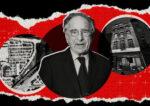Trending
New York developer shifts focus to Miami, now looks to New Orleans
Developer Michael Samuel doesn’t hesitate to say he likes building in Miami better than other cities. Before coming to South Florida, Samuel’s portfolio included projects in New York City, San Francisco and Baltimore.
“I like building in Miami better because there are more opportunities and it’s ahead of the rest of the country in design,” he said. “As a developer in New York City, you’re very limited in what you can build and every time you went for a project, before this crisis, there were a hundred people behind you.”
Samuel, principal of Miami-based Samuel & Co., which built the $2.3 billion Midtown Miami mixed-use project along with New York-based real estate investment firm Midtown Equities of New York, got his start in Brooklyn, where he grew up, collecting rent payments from tenants at properties his father owned. He went into construction, then property management, investment and consulting. Development was the next logical step, he said.
The developers started construction of Midtown Miami in 2001, a property described as “a city within a city,” and completed in 2005. Before the project, the 56-acre property, south of Interstate 195, was known as the Buena Vista rail yard. Samuel brought the site to the attention of co-investor Jack Cayre, principal of Midtown Equities and co-founder of Core marketing group.
“It was a drain on the city before we took it,” Cayre said. “Today, the people who live there, love it. We’ve got lots of young professionals and all types of artists. The people moving in there are people who are looking for the next thing, the types of people that make a place cool to be.”
Samuel then tackled South of Fifth, which he said is “a completely different type of project from Midtown Miami,” Samuel said.
Its fortunes have been somewhat different too, thanks to the collapse of the luxury market, but demand will bounce back, Samuel said.
South of Fifth is a South Beach residential project that includes 28 oceanfront residences, a much smaller-scale project than the expansive Midtown Miami. The complex consists of 10 lofts, 12 condos, three penthouses and three two-story beach houses. Units range from 1,300 to 6,200 square feet, and are priced from $1.5 to $10 million. Amid a sluggish market and deep reductions in sale prices, Samuel remains optimistic that buyers are out there looking for quality luxury properties in a prime location.
Despite the dismal lending climate, Samuel says he’s found a few of those buyers and closed several units. “The lending is totally what’s holding up the process,” he said. “They used to ask for nothing, now they ask for everything possible.”
He says his company will be considering other avenues for financing future projects. “I think we’ll work more with private and foreign investors,” he said. Samuel noted that the decreasing value of the dollar has created great investment opportunities for foreign investors looking for a deal. “We’ve met with a lot of Chinese and British investors.”
As much as Miami has been rewarding, Samuel knows the “location, location, location” maxim of real estate all too well. He said his next project takes him out of South Florida to pursue the construction of “Entergy Station,” a 20-acre mixed-use riverfront development in New Orleans on property he’s been holding for several years.
Although he’s moving on to New Orleans for his next project, Samuel can look back on his Miami track record with few regrets. At a time when many developers are stuck with unsold units or failed financing, Samuel’s timing has paid off. He’s moving on from Miami, where house prices have dropped an average of 48 percent since 2006, according to the S&P/Case-Shiller Home Price Index.




